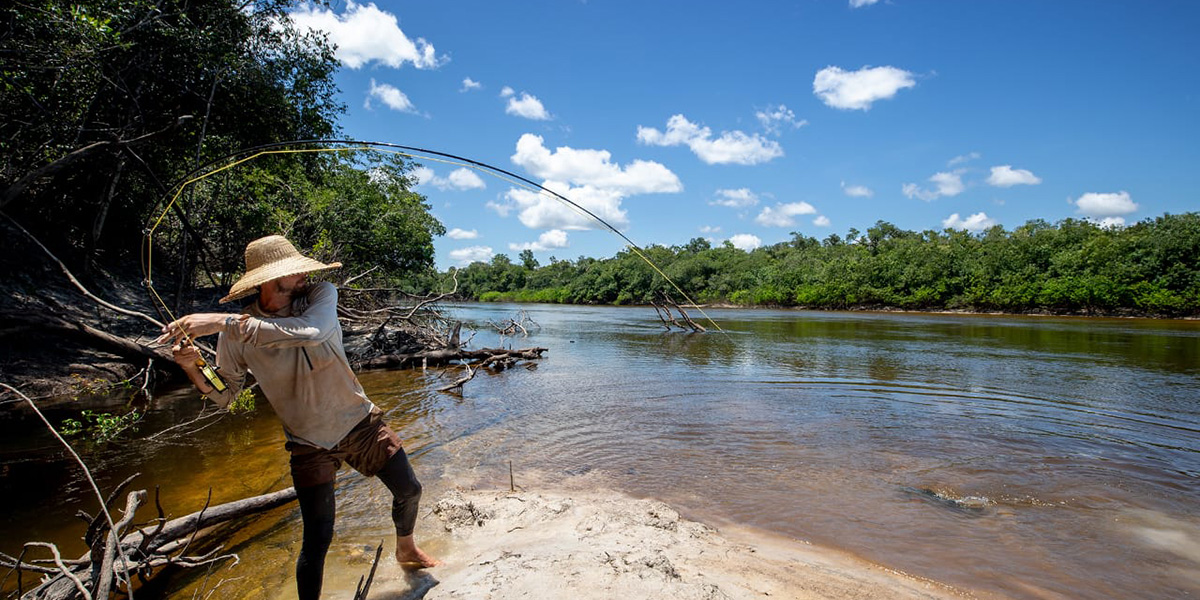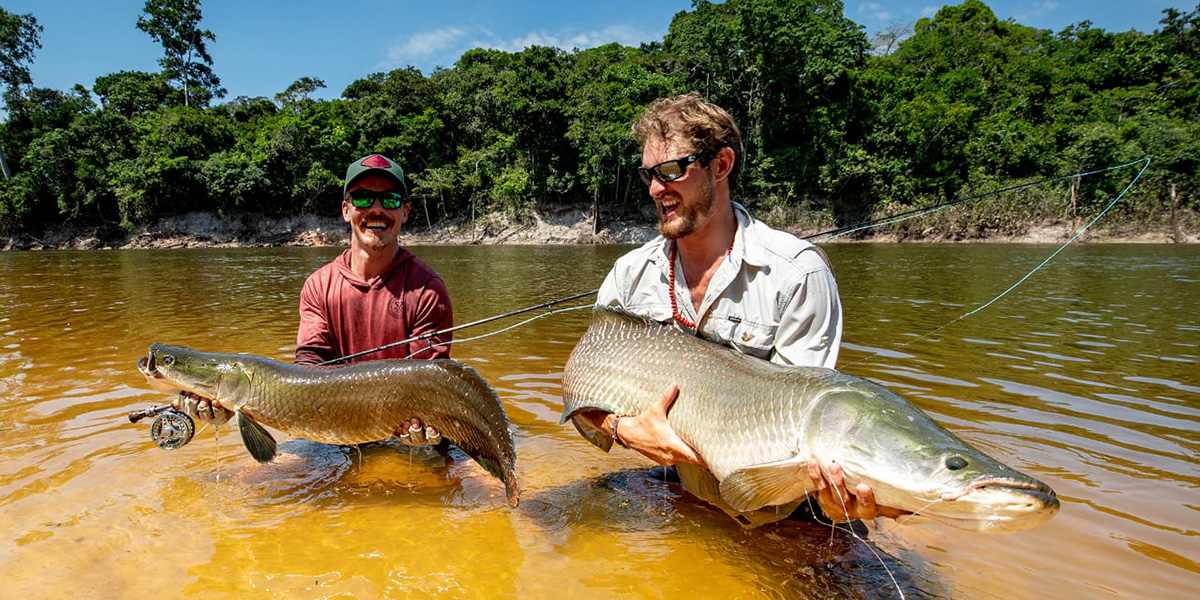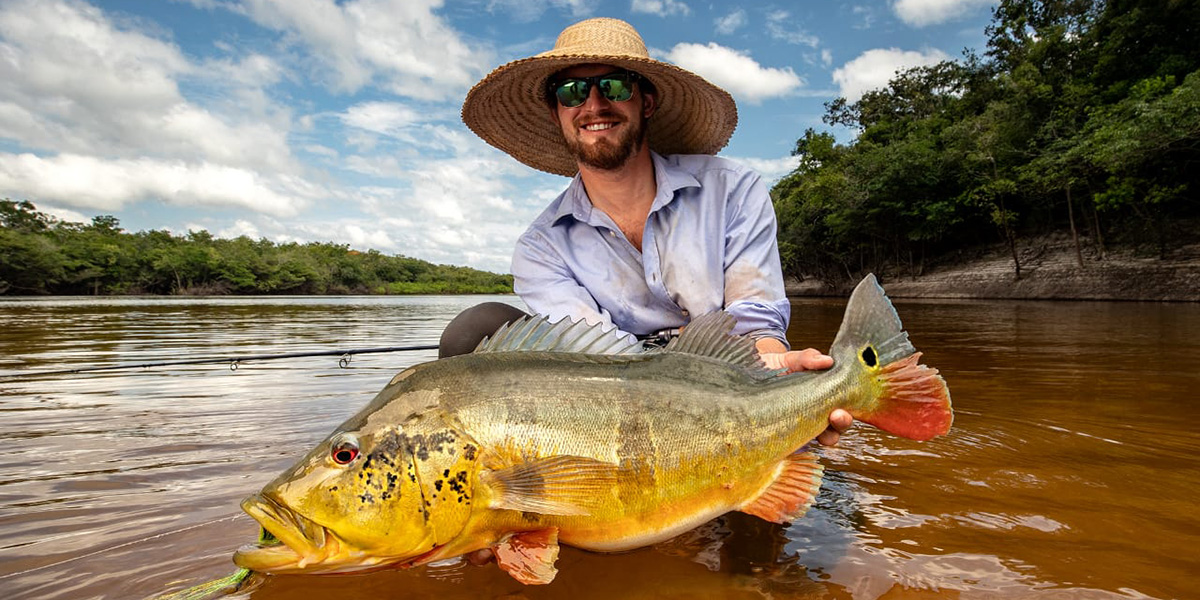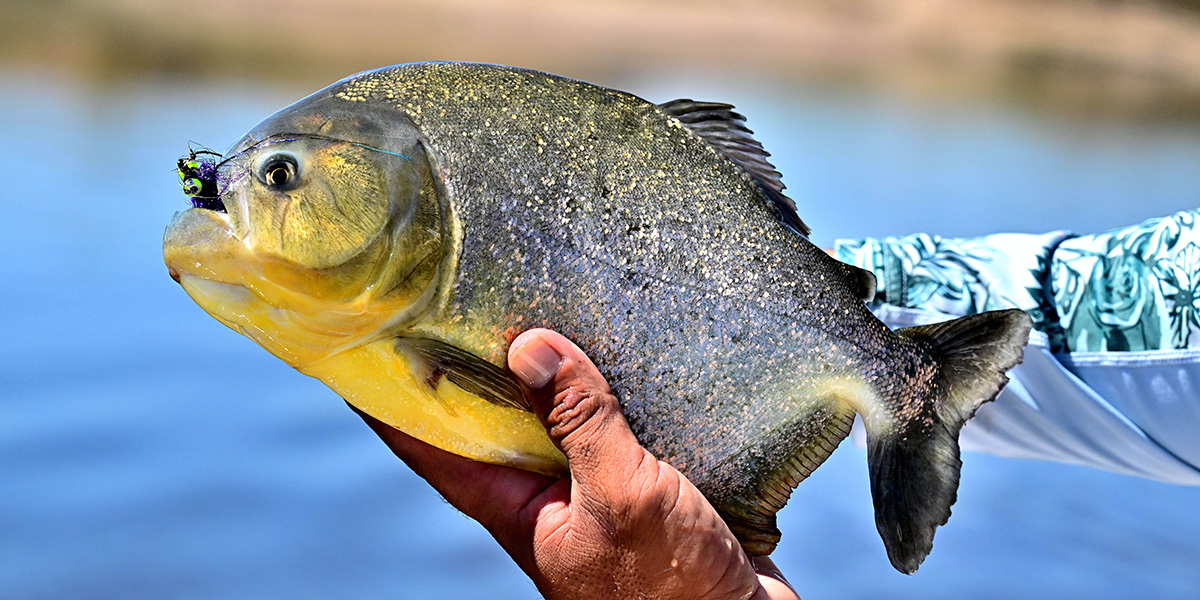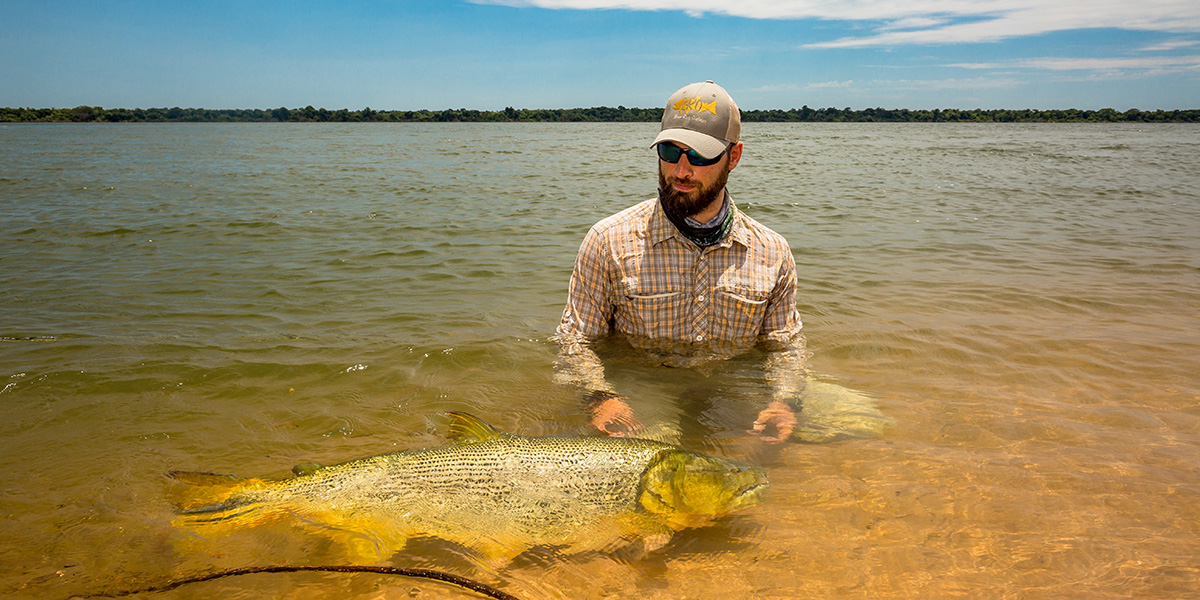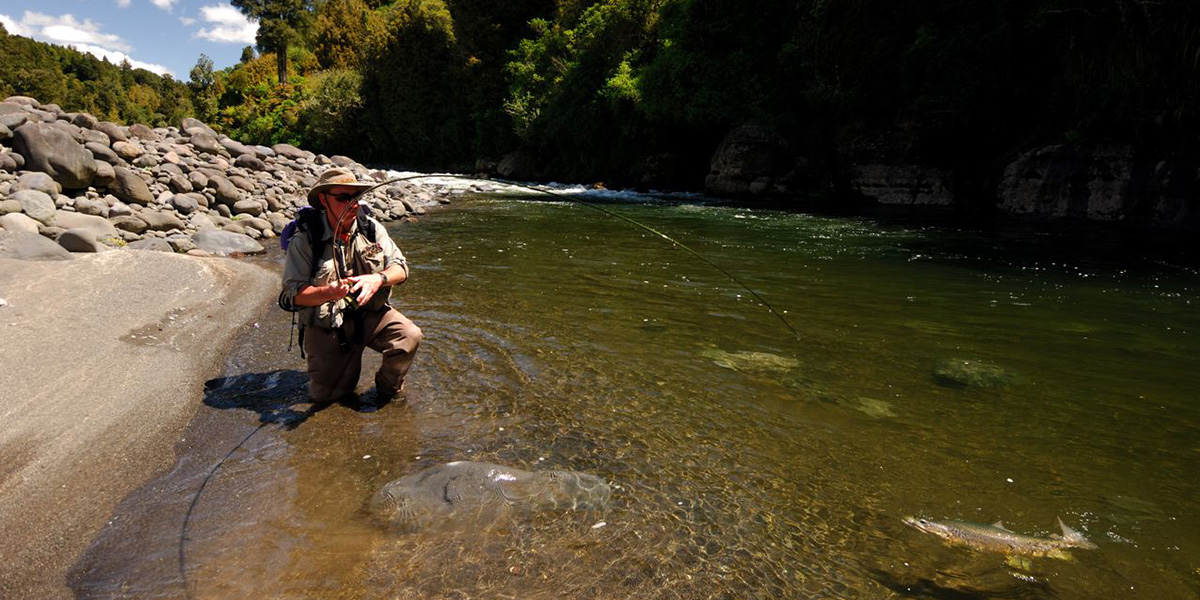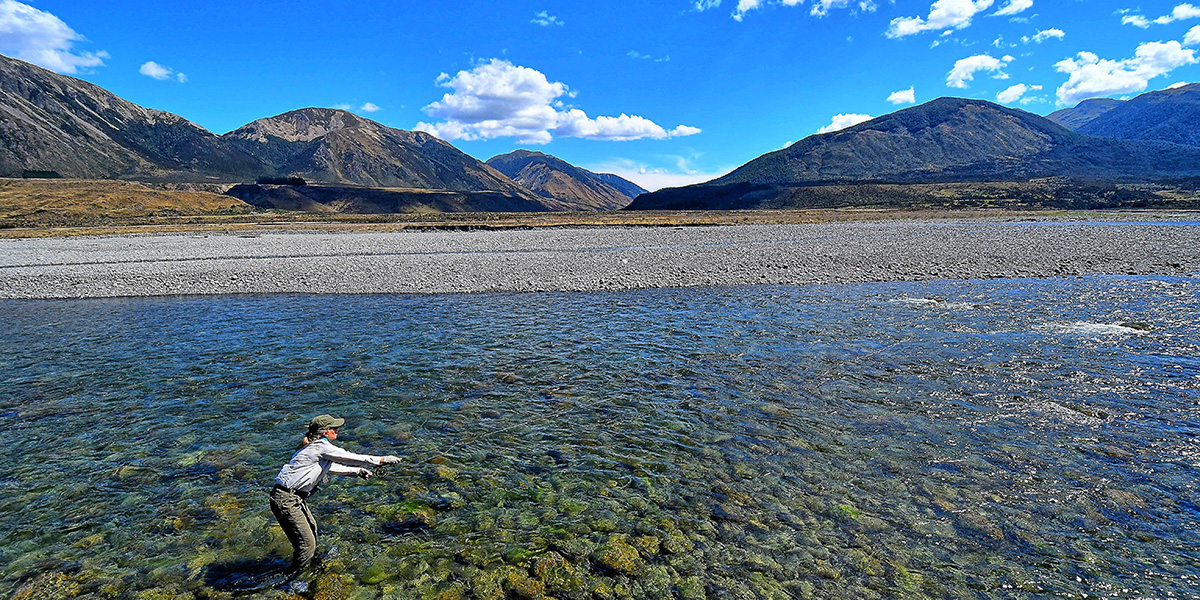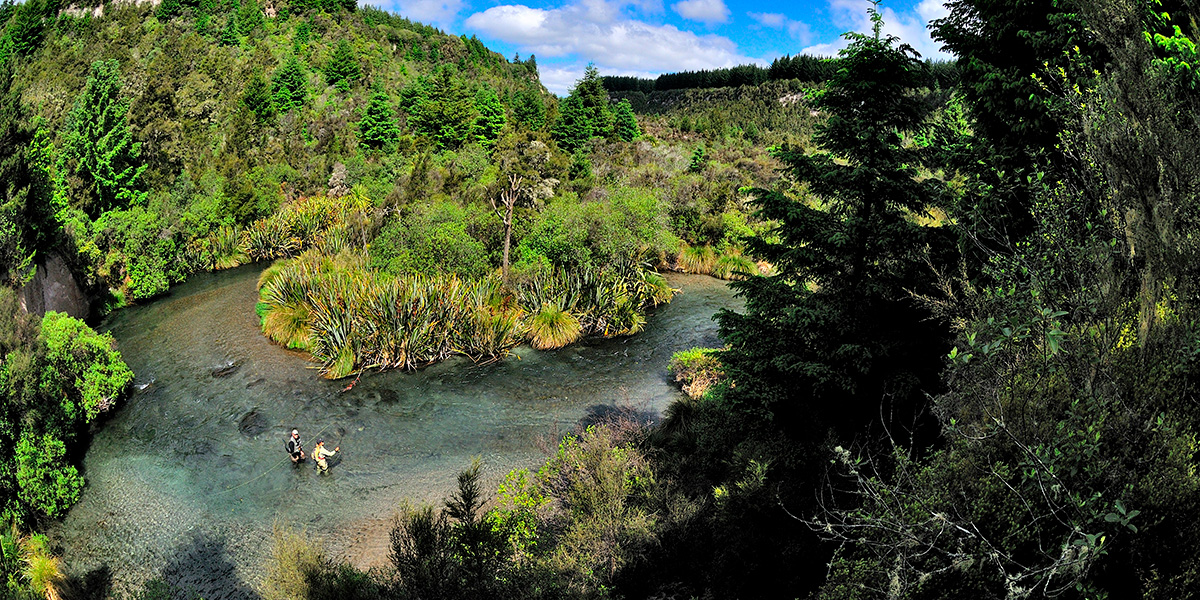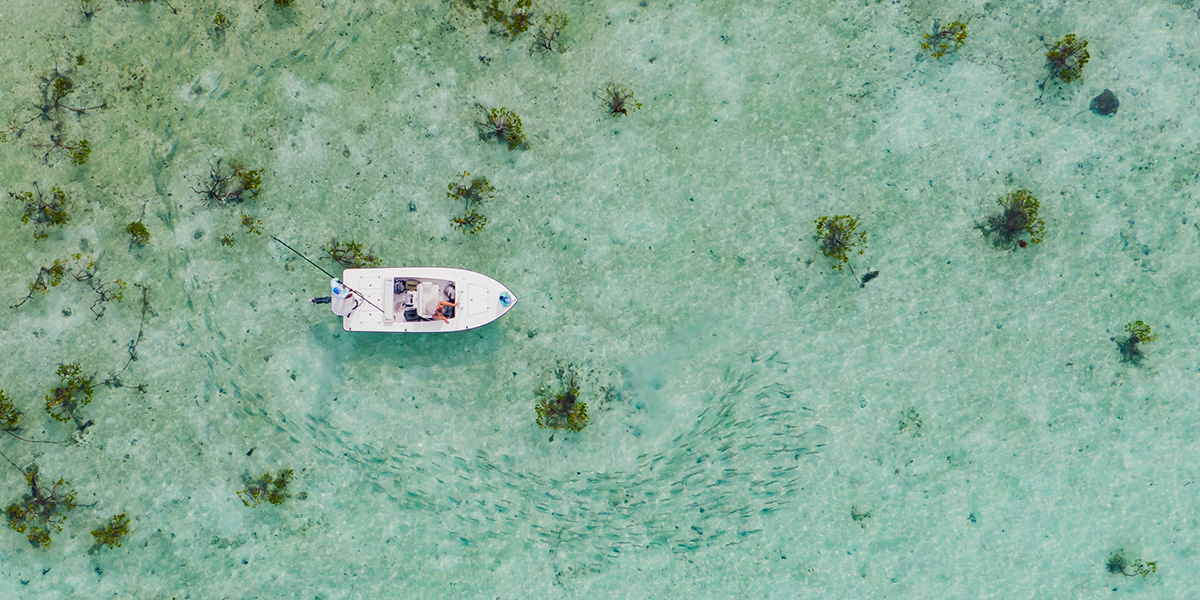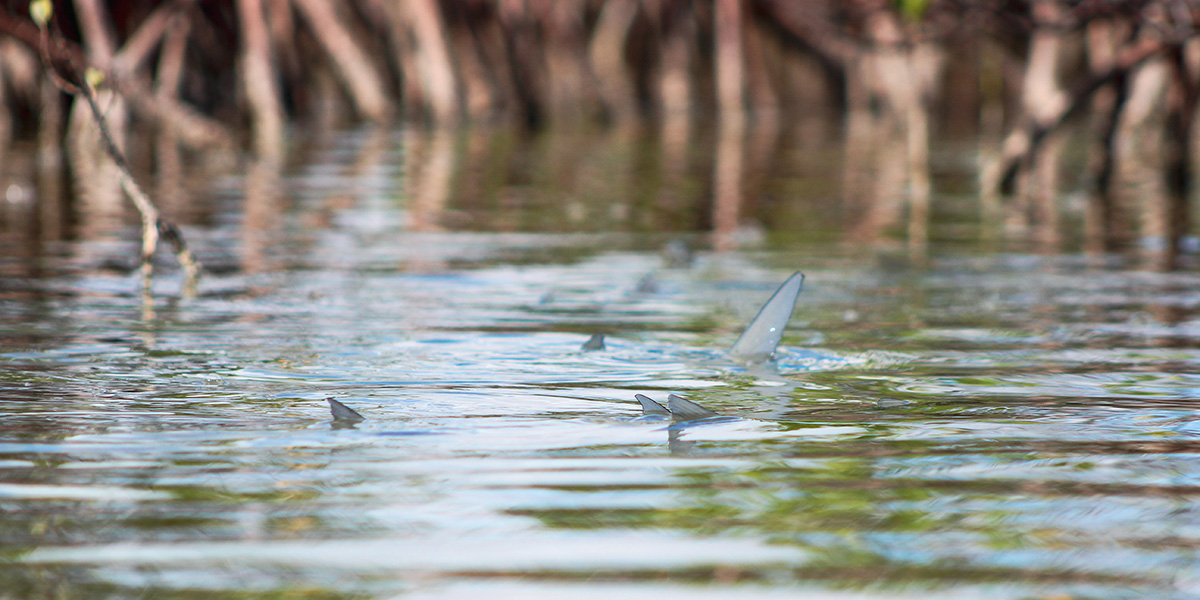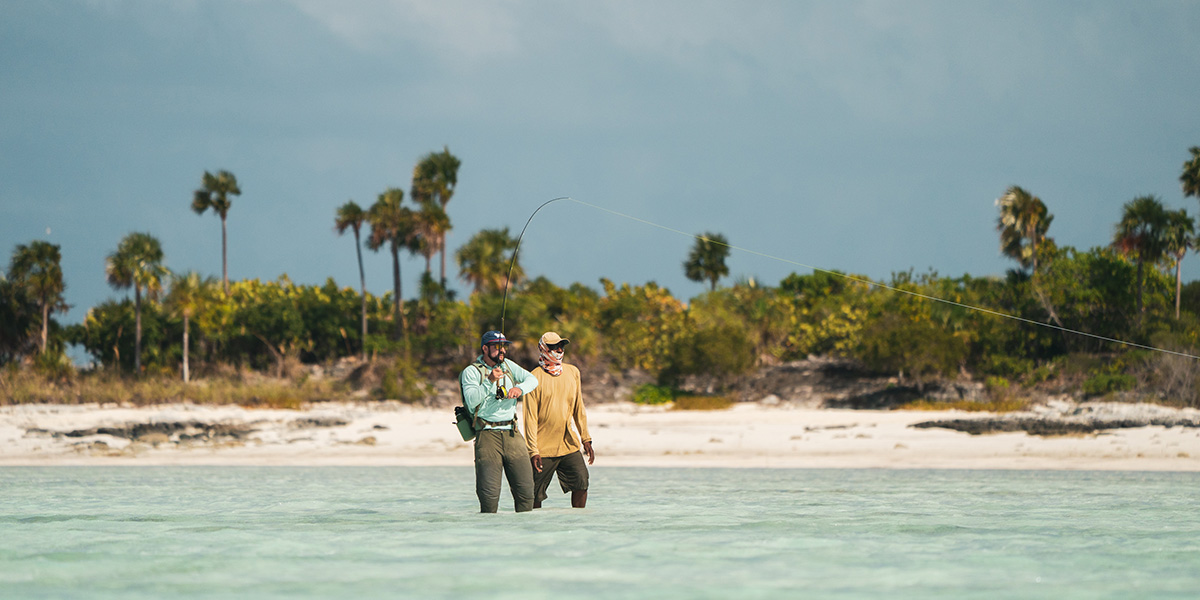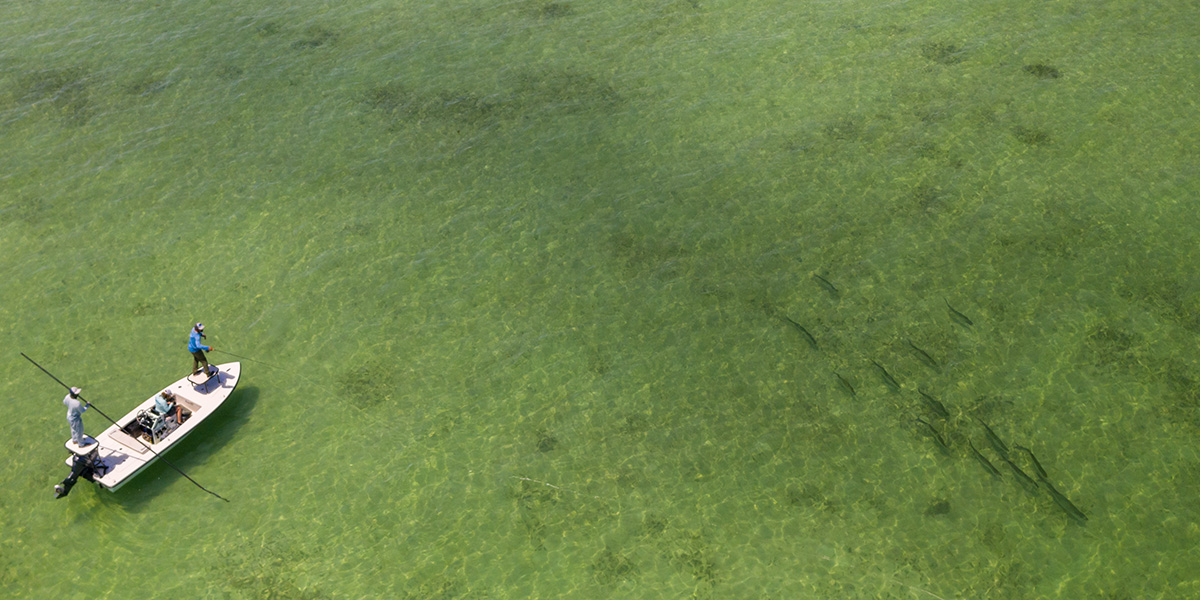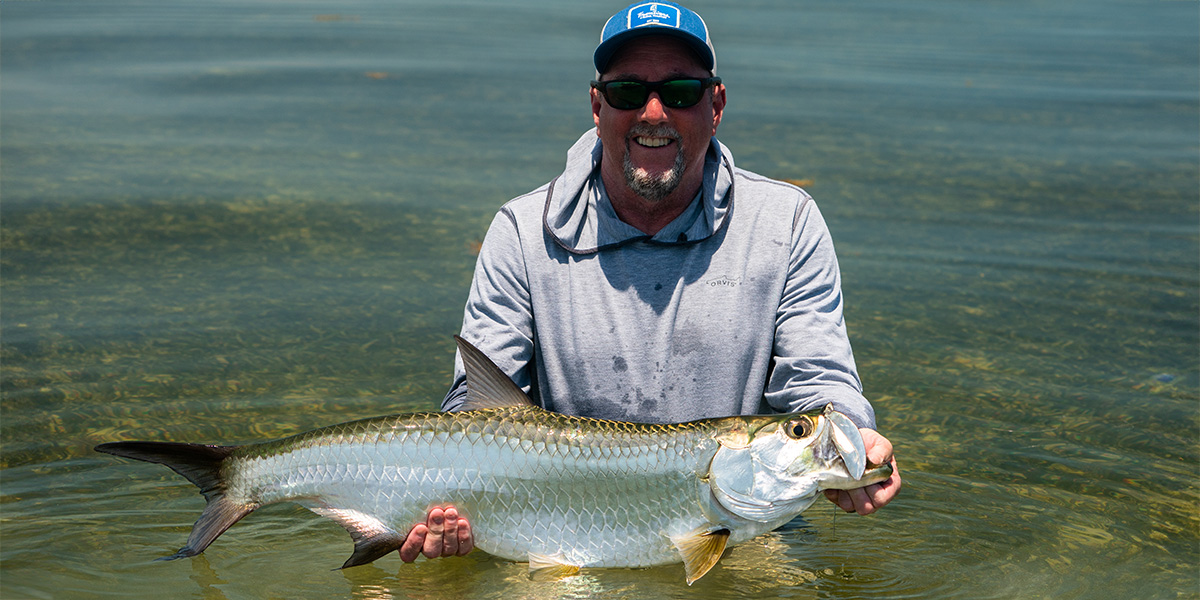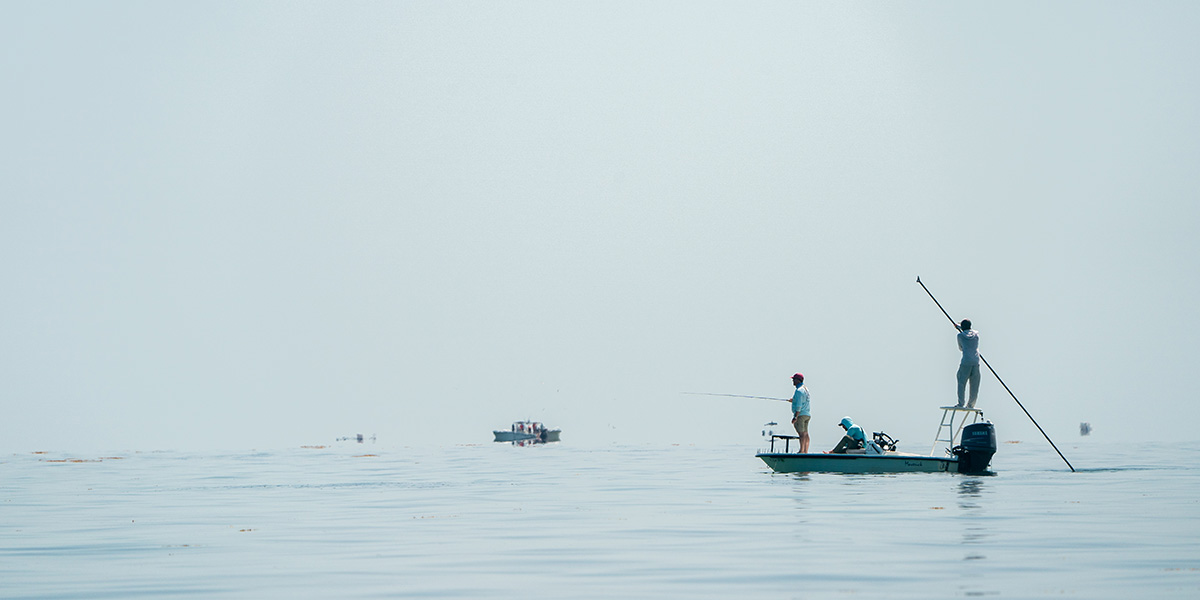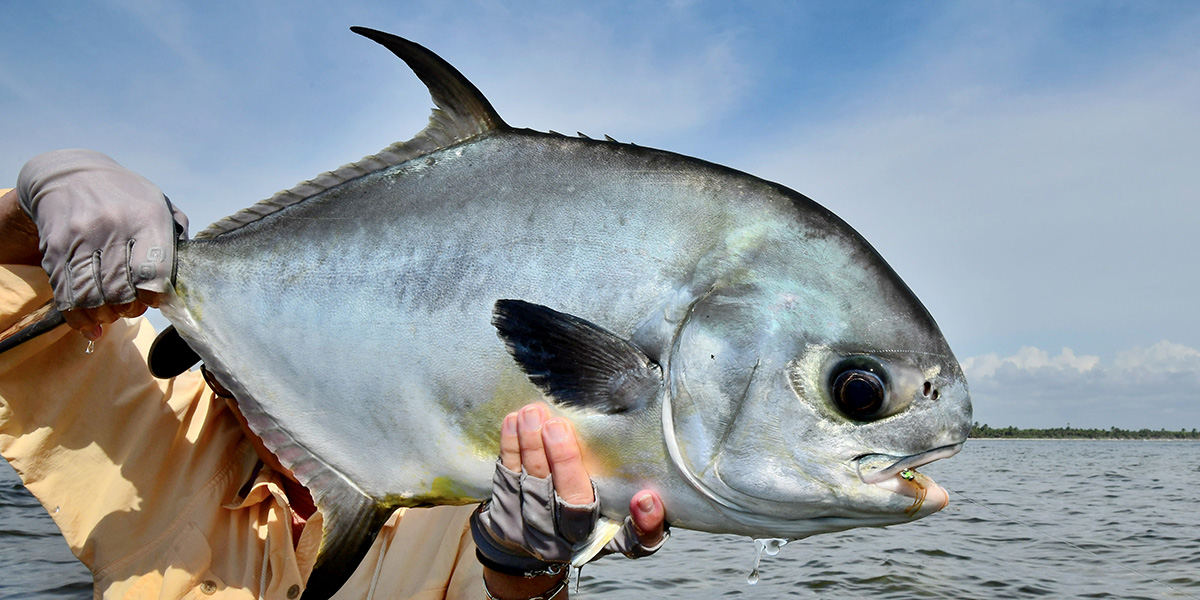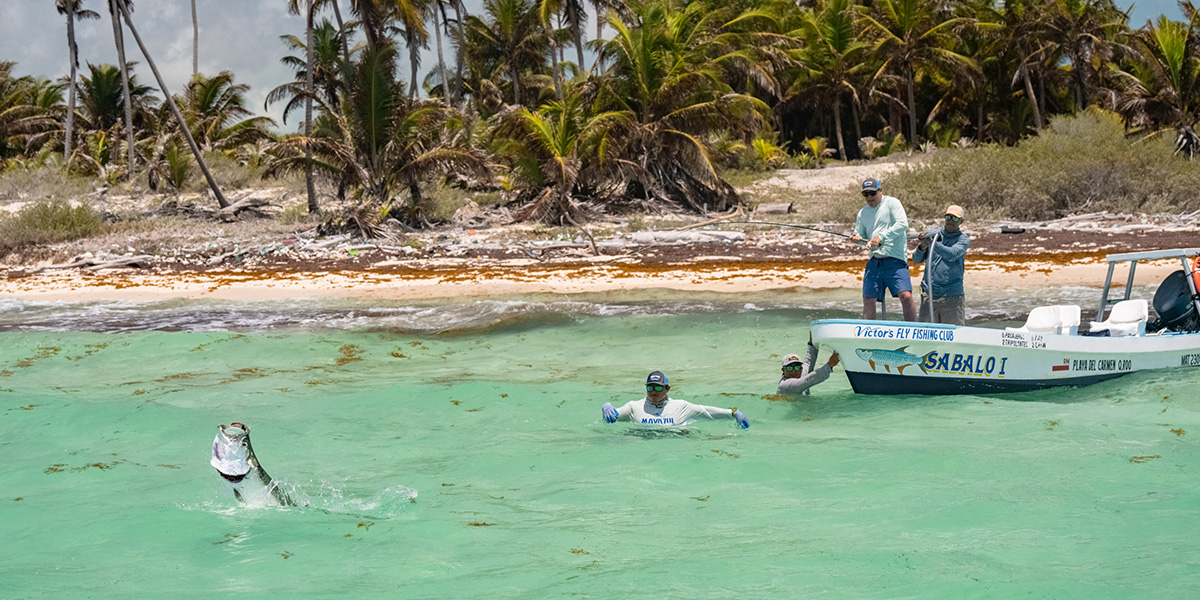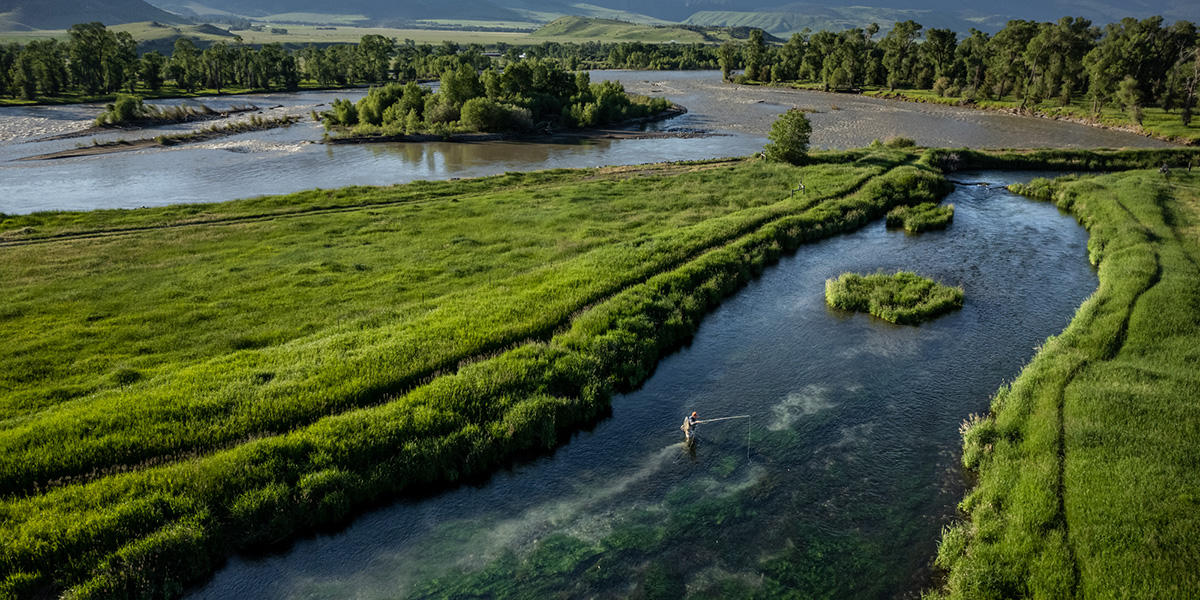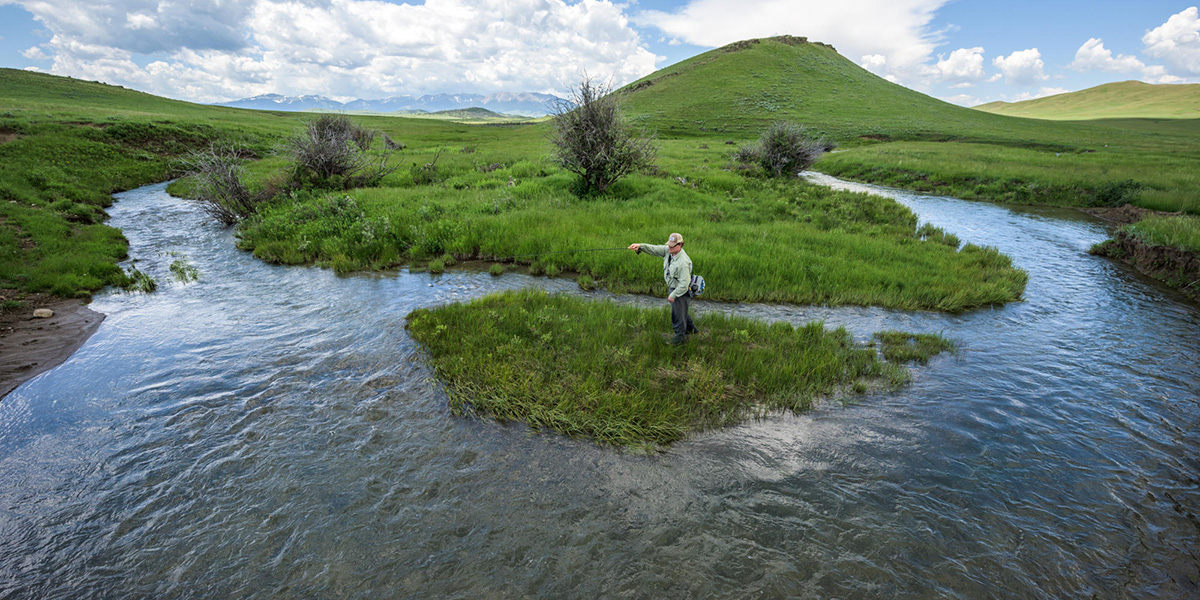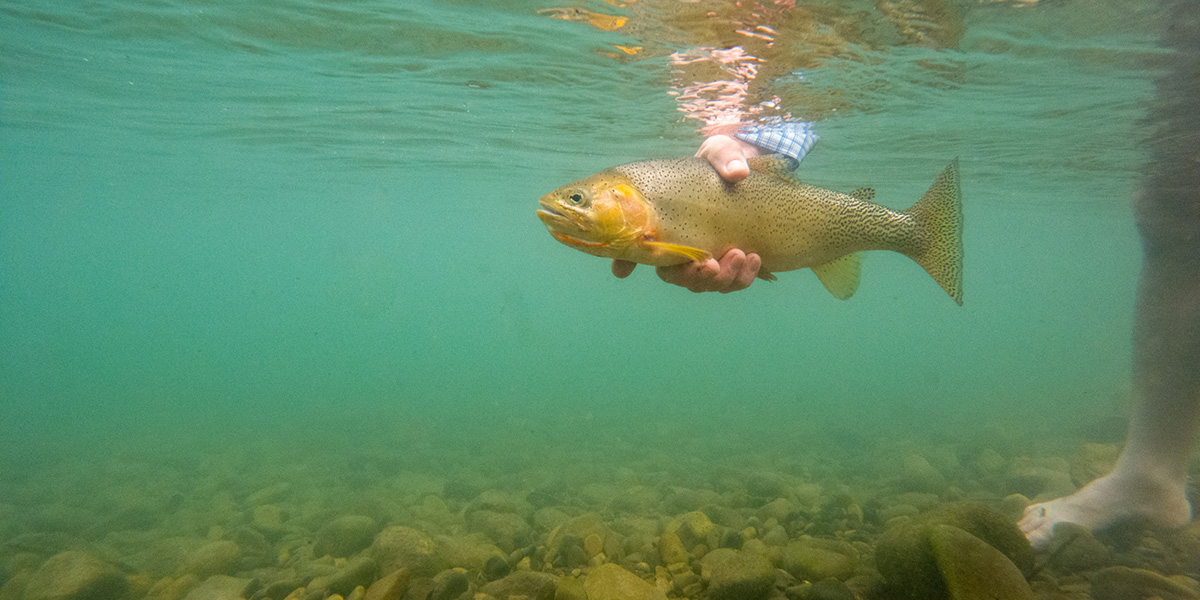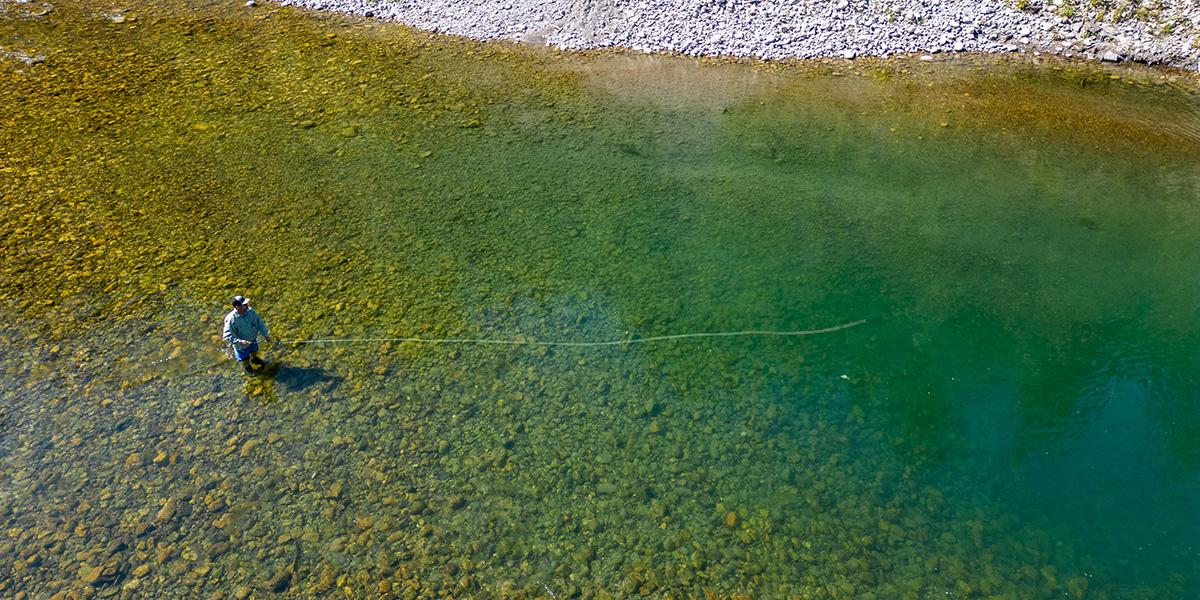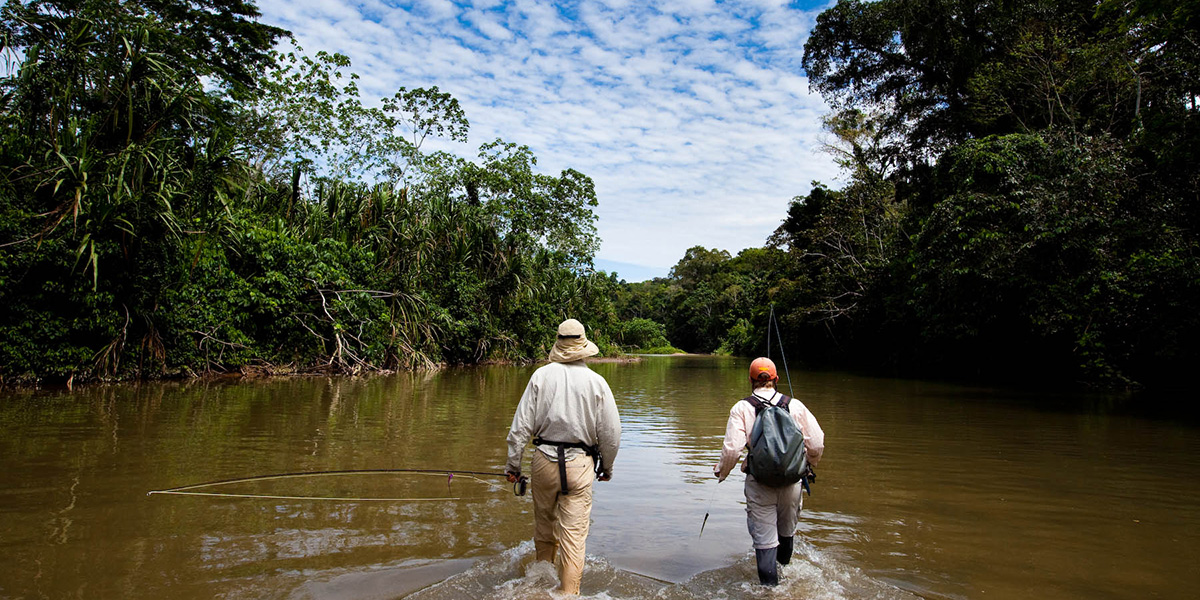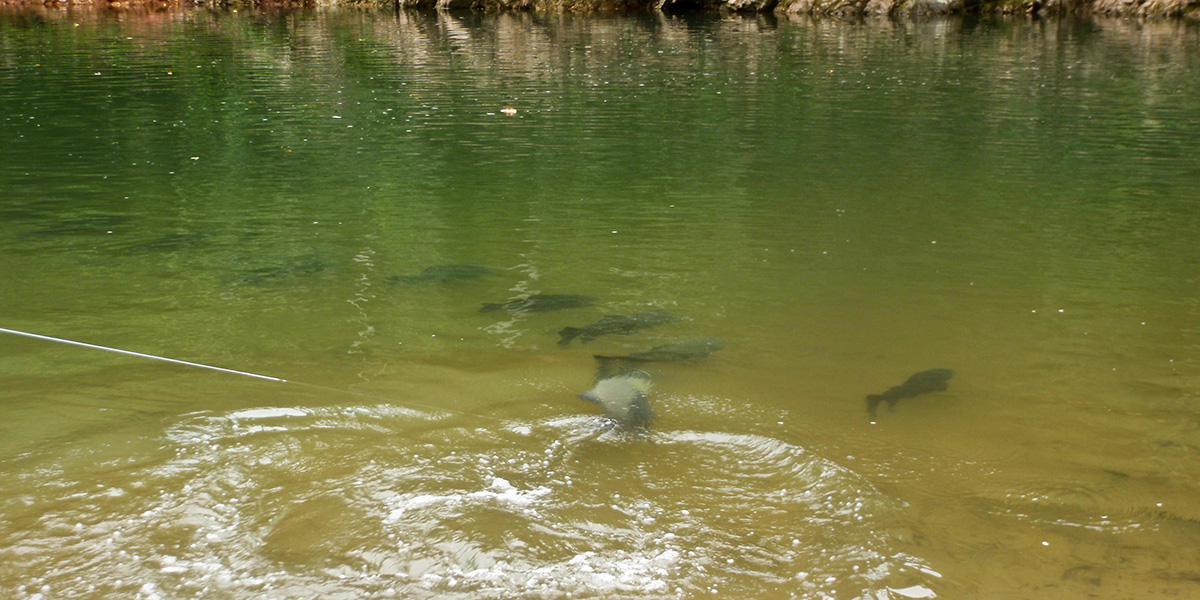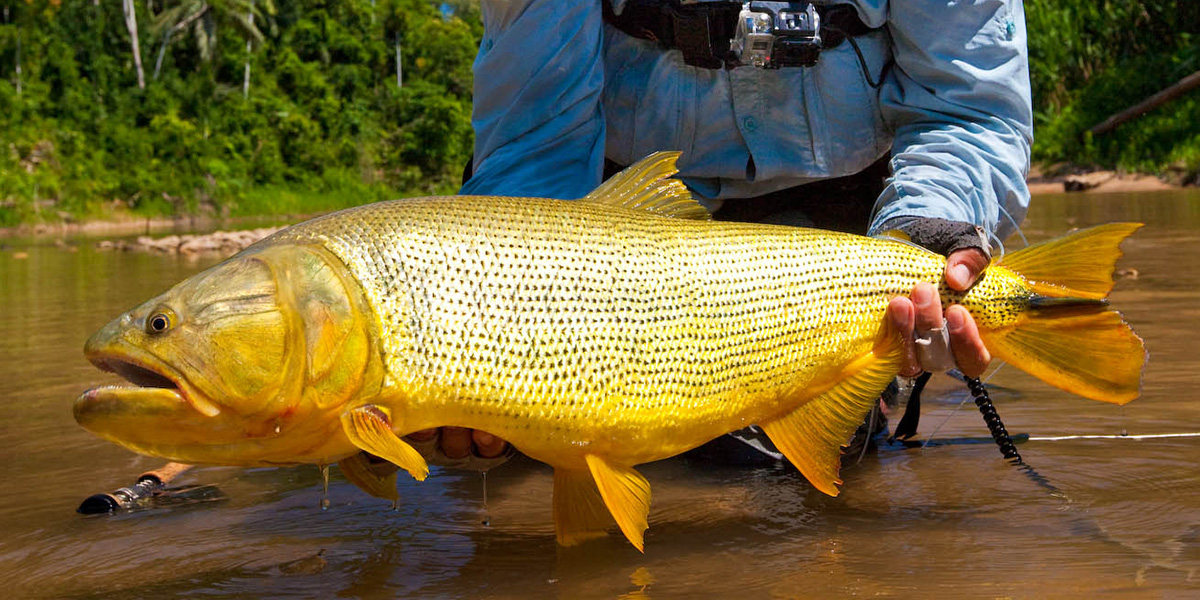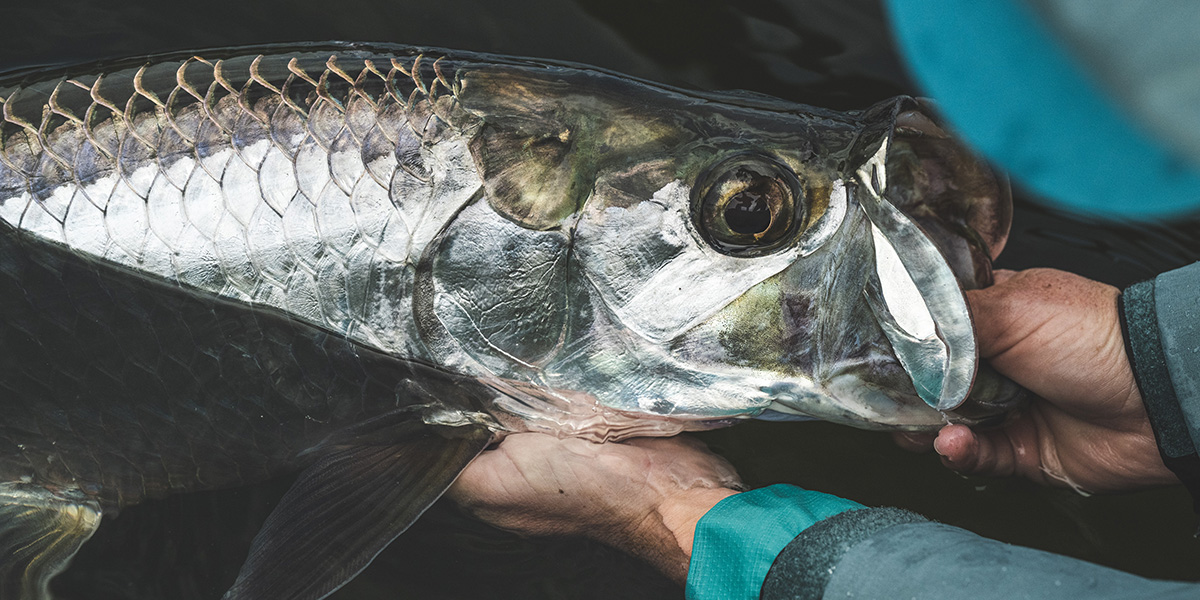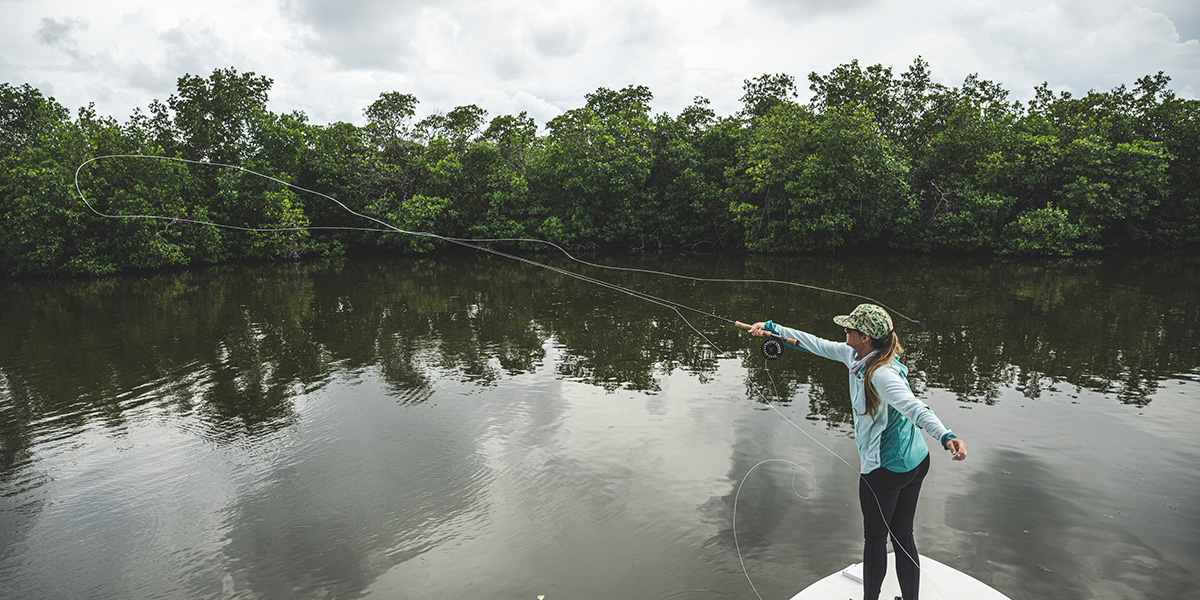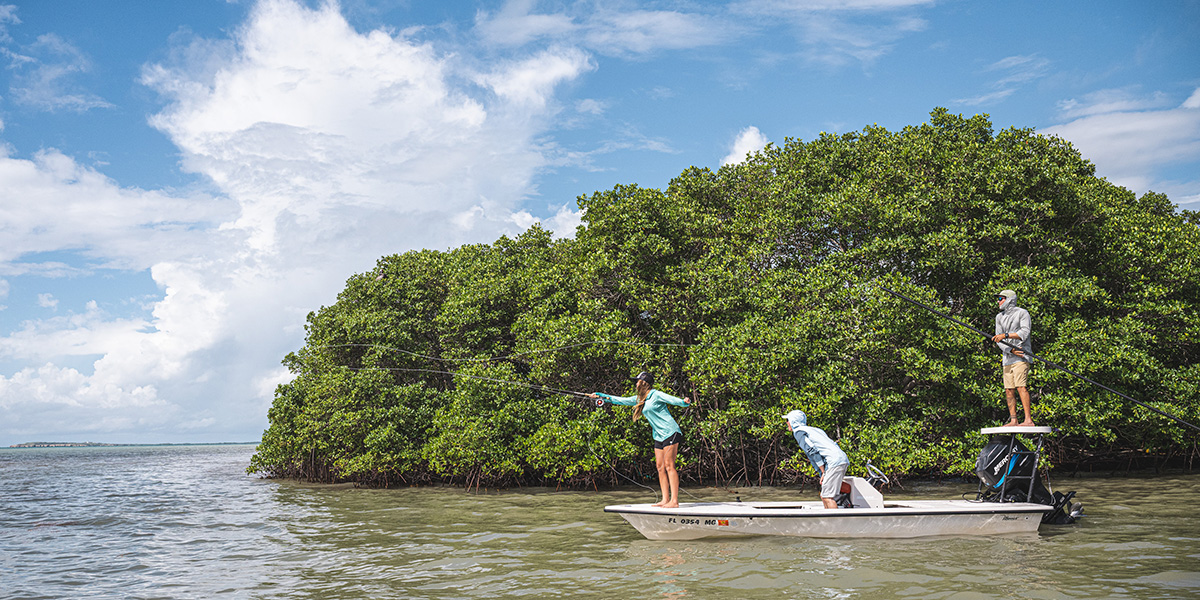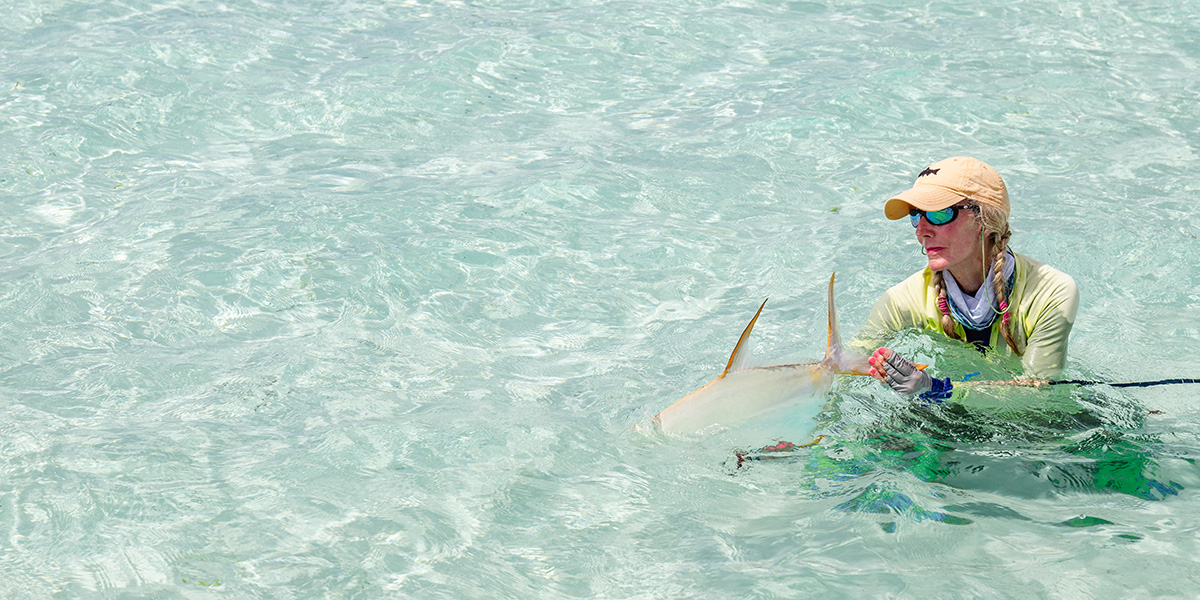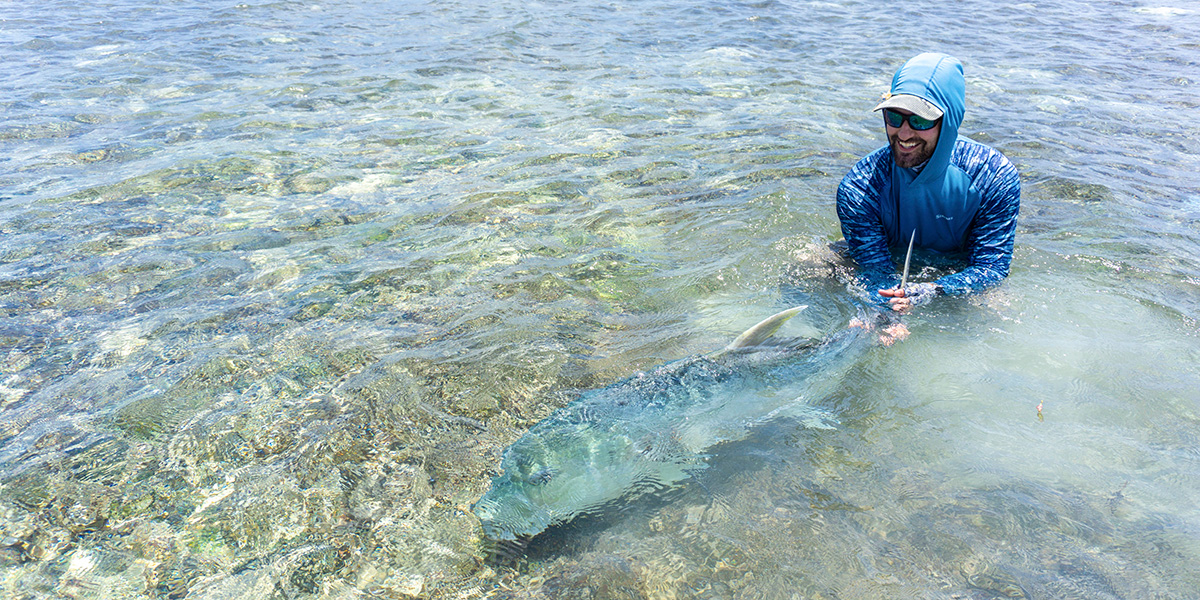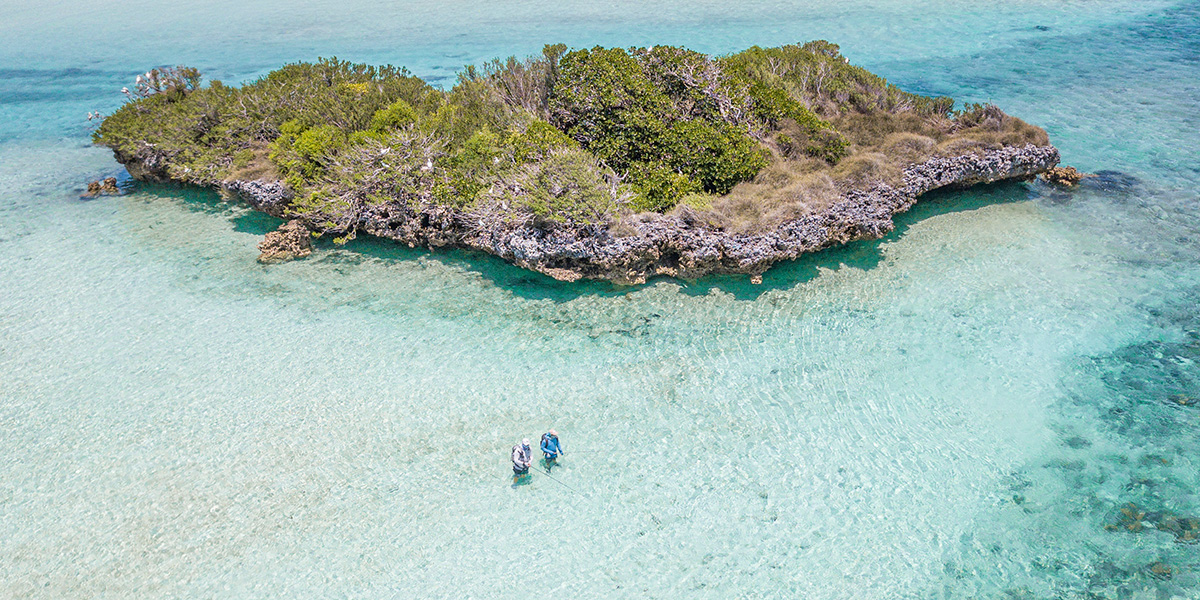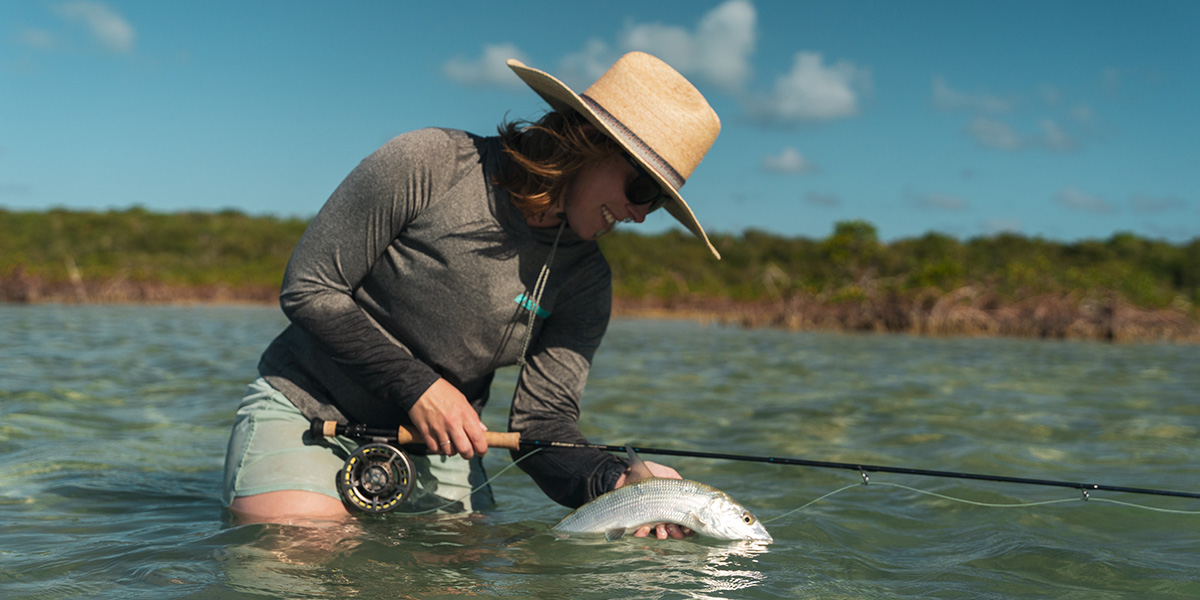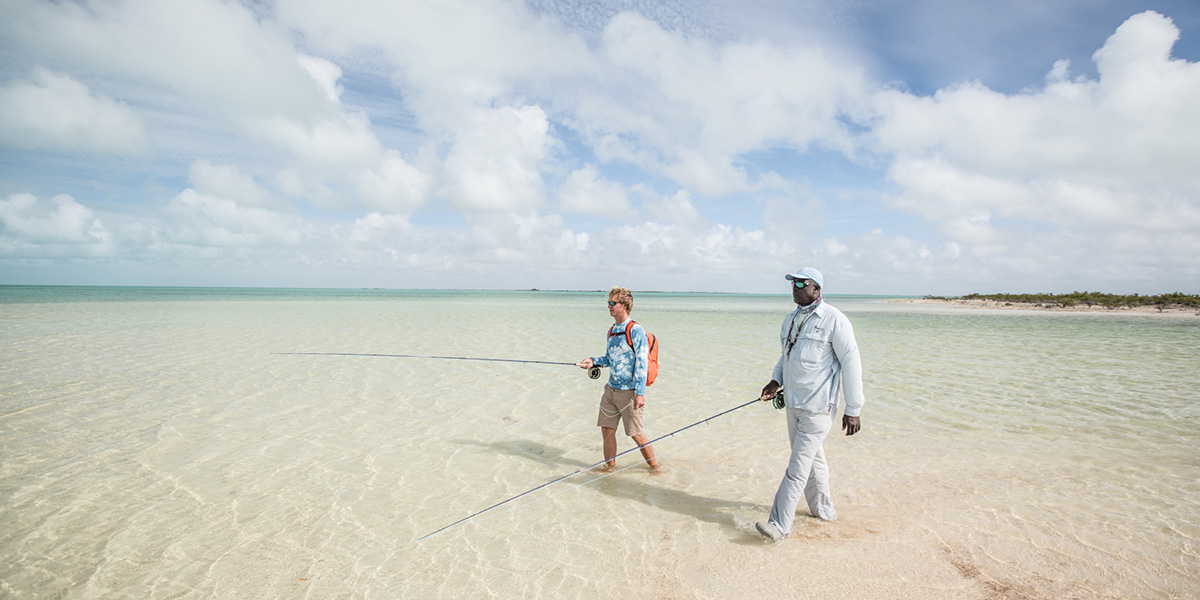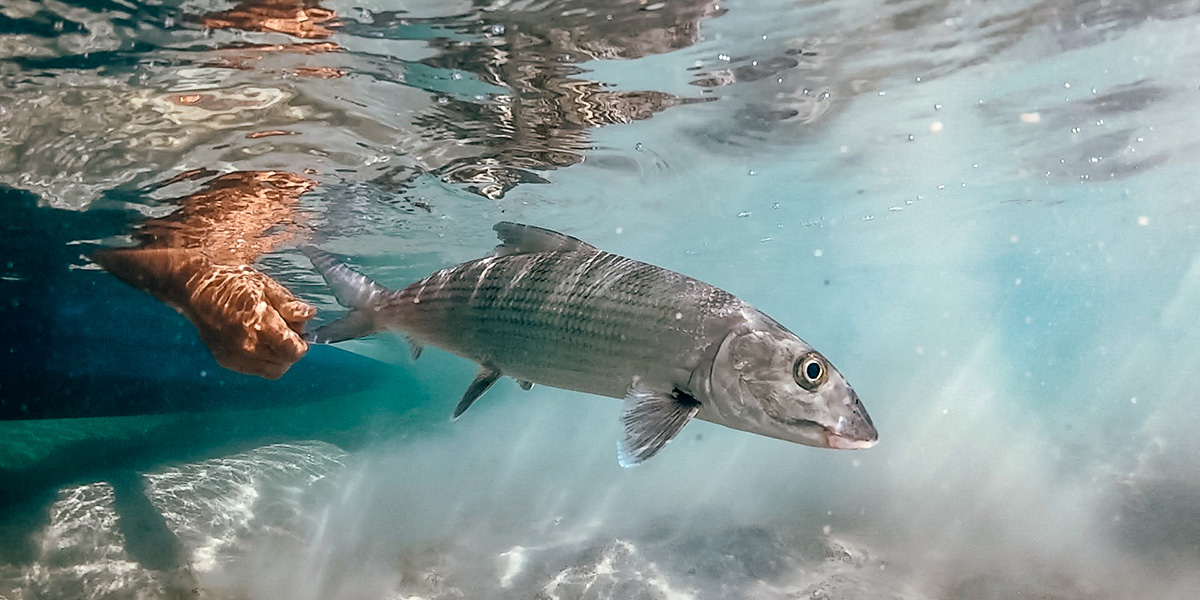Monthly Guide to Sight Fishing Around the World
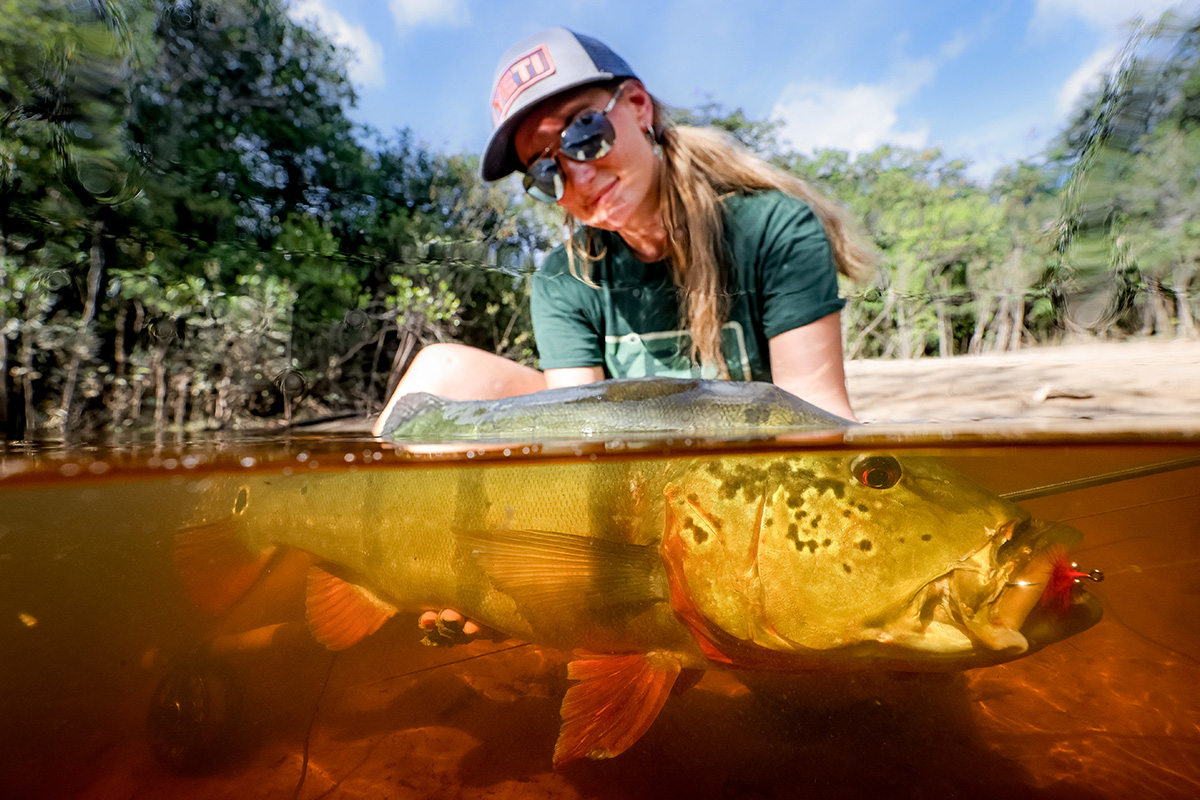
What fly angler hasn’t felt that shot of adrenaline and dopamine when nose poked above the surface of the water, followed by a pair of lips, to slurp a dry fly? Or when the tail kick closed the remaining feet of distance so quickly, you’re brain was still processing the sequence by the time that charging fish had already inhaled the fly? For anglers who live for the visual thrill of spotting and casting, we have curated a year’s worth of the best sight-fishing destinations in the world. Whether you’re hunting bonefish on white sand flats or trout in clear freestone rivers, these trips offer reliable opportunities at spotting and stalking quality fish, where the entire sequence unfolds before your very eyes.
Are these destinations or style of travel not for you? Check out some of our other articles to learn how you can fish all year:
-
- Easy to Reach Fly Fishing Destinations
- Best Places to Catch Trout Each Month for Traveling Anglers
- Travel Destinations that are Great for New Fly Fishers
- Fishing for Numbers: Destinations with Strong Catch Rates by Month
- Group Friendly Fishing: Monthly Guide to All-Inclusive Trips
- International Fly Fishing Destinations with Trophy-Sized Fish
- Remote Fishing Trips by Month: Off-the-Grid Angling Spots
Peacock Bass Explosions in Crystal-Clear Amazon Waters
Brazil – January
Prepare to be amazed. Fly anglers, even well-traveled ones, often find themselves astounded and charmed when visiting the Agua Boa lodge in Brazil. The rainforest canopy, riverfront jungle lodge, and ultimate clear water fly fishing experience features sight-fishing for one of the fiercest and most colorful fighting fish—the peacock bass. Agua Boa is the sole fly-fishing-only river in Brazil designated as a single barbless hook fishery to preserve its resources for generations. Marauding bass decimate well-presented flies (sometimes not-so-well-presented ones, too) along the many sand bars and flats throughout this shallow river. Surface poppers and crease flies are highly effective, creating a disturbance in the water that big peacocks cannot resist.
You’ll predominantly target three species of peacock bass (butterfly, spotted, and temensis). There can also be opportunities for arowana, arapaima, payara, wolf fish, and redtail catfish from the bow of your flat-bottom skiff. Along the way, you may witness howler monkeys, macaws, jaguars, capybara, giant river otters, parrots, and other sights in the jungle canopy.
Contact our Expert: Tom Gilliland
Call: 1-800-245-1950
Clear-Water Fishing for Golden Dorado in the Ibera Marsh
Argentina – February
Flats anglers will feel right at home poling along the Ibera Marsh in a Hells Bay skiff to target golden dorado. One of our favorite programs is Pira, located in Argentina’s northern province of Corrientes. The tannin-stained clear waters are ideal for sight-fishing to dorado with 7 and 8-weight rods, floating lines, and topwater flies, a technique that produces acrobatic, heart-stopping strikes.
Fishing for Dorado on a top water mouse or titanic equates to me and spey casting, they absolutely love it, but are not very good at it. What does that mean? It means when Dorado are on the surface bite the takes are absolutely violent and aerial, but they miss as much as they hook up. This makes for great fun and multiple shots at one or a group of marauding fish. But anglers should fear not, these fish get their prey eventually. Additionally, streamer fishing in the marsh is abundantly visual as fish eat primarily in the top 24 inches of the water column, making floating lines and bushy-headed unweighted flies, for water displacement, ideal.
Warning: Dorado fishing is addictive, and once one experiences the flashing radiant gold flanks and strong backs and jaws and the absolute hammering of the fly, there is no going back.
Contact our Expert: Hank Ingram
Call: 1-800-245-1950
Stalking Trout in Low, Clear Waters in New Zealand
New Zealand – March
March is one of the finest months to experience sight-fishing for large trout in New Zealand with an unrivaled combination of challenge and solitude. As summer transitions into early autumn, the rivers run low and clear, offering optimal conditions for spotting and stalking brown and rainbow trout. With the sun still high in the sky, visibility remains excellent, allowing for precise presentations to feeding fish. Cooler temperatures and stable weather patterns contribute to some of the best dry-fly action of the season, making it a prime time for anglers who appreciate the art of technical casting. During this period, trout become more opportunistic, actively rising to late-season hatches, creating thrilling moments for those who can match the hatch with finesse. They are also often looking up to attractors. Dry droppers work well during the autumn months, too! With the departure of peak-season summer anglers, the country’s famed rivers—such as the Motueka, Ahuriri, and Tongariro—offer a more intimate and rewarding experience. These waters, known for their abundant wild trout populations, allow anglers to test their skills against wary fish in gin-clear waters. With world-class guides and luxury lodges providing seamless access to these waters, sight-fishing in New Zealand this time of year is nothing short of spectacular.
Contact our Expert: Kristene Fitzgerald
Call: 1-800-245-1950
Bonefish Action at it’s Springtime Peak
Bahamas – April
April is an excellent month for sight-fishing bonefish in the Bahamas. As water temperatures rise, bonefish become more active on the flats, offering prime opportunities for anglers. Mornings often bring tailing fish in skinny water, while deeper flats hold cruising fish as the sun rises. Calm conditions also allow for excellent wading opportunities, creating close, immersive encounters with quality bonefish.
The Bahamas’ fishery is vast, stretching from the endless sand flats of South Andros to the wadable waters of the Joulter Cays and the oceanside flats of Abaco Island. Anglers can enjoy the challenge of spotting and stalking fish in ankle-deep water. April’s stable conditions also make it an ideal time to target larger, solitary bonefish that feed aggressively ahead of summer. With longer days and the sun staying high in the sky, spring provides optimal conditions for sight fishing. The combination of reliable tides, abundant fish populations, and the excitement of watching bonefish feed in clear water makes it one of the best seasons for saltwater fly fishing.
For accommodations, Abaco Lodge has reopened after extensive renovations, providing access to over 200 square miles of prime bonefishing flats. Bair’s Lodge on South Andros Island offers diverse wading and boat fishing opportunities, while Kamalame Cay provides a private island retreat with luxury accommodations and productive bonefishing waters both nearby and to the famed Joulter Cays to the North. Whether seeking technical fishing or a mix of sport and relaxation, April in the Bahamas delivers an exceptional saltwater experience.
Contact our Expert: Joe Linscott
Call: 1-800-245-1950
World’s Best Migratory Tarpon Fishing?
Florida Keys – May
May marks the peak of the tarpon migration in the Florida Keys, drawing fly anglers eager to engage with these powerful fish. Large schools of tarpon traverse the clear, shallow flats, offering prime sight-fishing opportunities. Keys tarpon are notorious for requiring precise casting and subtle presentations. Which tends to be true, until it’s not. Like in permit fishing and other flats scenarios, there is a mixture of truth, fiction, and exceptions when it comes to chasing the large adult tarpon around the Keys. During the migration, expect your guide to have you throwing a palolo worm fly or a small baitfish pattern.
The Florida Keys’ unique geography, with its blend of ocean-side flats and secluded backcountry waters, provides diverse environments to target migratory tarpon. This variety in settings allows for guides to adapt to changing conditions, accommodate anglers’ preferences, and offer unique experiences from day to day or trip to trip. In the minds of many anglers, this diversity, combined with the sheer number of migrating fish, solidifies the Florida Keys as the premier destination for those seeking the thrill of sight-fishing to large, migratory tarpon.
Contact our Expert: Joe Linscott
Call: 1-800-245-1950
Consistently Good Opportunities for Grand Slams in the Yucatan
Mexico – June
Sure, the Florida Keys remain a strong option in June as well as May. To give you another idea, consider Mexico in June. In many circles around the fly fishing industry, Mexico is becoming an increasingly popular summertime destination. Yes, it is hot. Yes, there is (usually) a slim chance of a significant storm system. However, June can be a goldilocks month in Mexico when considering weather, fishing, and pressure. Hurricanes are very rare, and the weather tends to be a bit less hot, humid, and stormy. Instead, it tends to be stable with less wind than some of the favored prime traveling months of the spring. Perhaps most importantly, the sunlight, a critical yet sometimes overlooked element for sight-fishing, is excellent with high angles and long days in June.
Aside from the conditions, there is the excellent fishing of June to consider. Migratory tarpon can be found in solid numbers near Ascension Bay and other areas of Mexico. These tarpon are not the pressured fish of South Florida. While not “gimmes”, they will readily eat. Often, a decent presentation will result in a five-gallon bucket appearing behind your fly, otherwise known as the cavernous mouth of an eating tarpon. Besides adult tarpon, you can expect excellent chances at permit, with singles, doubles, and small schools all very common on a daily basis. Bonefish, snook, jacks, ‘cudas, and the usual suspects around the flats, reef, mangroves, and lagoons are all in play during June.
Contact our Expert: Ben Hoffman
Call: 1-800-245-1950
Trout on Terrestrials in Montana
American West – July
July is peak season for dry fly fishing in Montana, with trout actively feeding on both aquatic insects and terrestrials. Consistent hatches of Pale Morning Duns, caddis, and stoneflies keep fish looking up, while the emergence of grasshoppers, ants, and beetles adds another dimension to the fishing. As water levels drop and clarity improves, rivers like the Madison, Yellowstone, and Missouri provide excellent opportunities to target rising trout in classic dry-fly conditions.
The Madison River, in particular, fishes well with large dry flies throughout July, with trout aggressively taking stonefly imitations in faster runs and terrestrials along grassy banks. Spring creeks, such as those in Paradise Valley, demand precise presentations with smaller dry flies to fool selective fish feeding on PMDs. The combination of technical sight-fishing and explosive takes makes July one of the most exciting times to target wild trout in Montana. With long days, consistent hatches, and trout eager to rise, it’s a prime season for anglers looking to fish dry flies in the American West.
Contact our Expert: Joe Koziara
Call: 1-800-245-1950
Topwater Action in Cold Creeks in the Canadian Rockies
British Columbia – August
Much like summertime in the American West, August in Fernie, British Columbia, offers prime dry fly fishing opportunities for trout anglers. In contrast to the U.S., British Columbia’s management of its fisheries and fishing pressure with limited permits helps to avoid some of the over-crowding that occurs during certain times on popular waters in the American West. August around Fernie typically has water levels stabilizing and temperatures rising, leading to terrestrial insects like ants, hoppers, and beetles becoming abundant and enticing trout to feed actively on the surface. The Elk River, renowned for its native Westslope Cutthroat Trout, provides anglers with clear waters ideal for sight-fishing. These trout are known for their willingness to rise to terrestrials and dry flies.
The region’s tributaries, such as the Wigwam and Bull Rivers, also offer excellent dry fly action during this period. The Bull River, with its cold, clear waters, sees good hatches of mayflies and caddisflies from late July to the end of August, making it a favorable time for anglers targeting these species. The combination of diverse insect hatches and the natural beauty of the Canadian Rockies makes August an exceptional time for dry fly fishing around Fernie.
Contact our Expert: Hank Ingram
Call: 1-800-245-1950
Golden Dorado in the Clear Waters of Bolivia
Bolivia – September
September in Bolivia’s Tsimane region offers unparalleled sight-fishing opportunities for golden dorado. As water levels drop during the dry season, the region’s clear, freestone rivers provide ideal conditions for anglers to spot and target these aggressive predators. The convergence of the Amazon jungle and the Andean foothills creates a unique backdrop, where anglers can wet wade trout-sized streams, casting to dorado that often hunt in packs, ambushing baitfish in shallow waters.
The Tsimane area is renowned for its diverse fisheries, encompassing rivers like the Pluma, Itirizama, and Sécure. Each offers distinct fishing experiences, from deep pools to rugged pocket water. Anglers can expect to encounter not only golden dorado but also species like pacu, yatorana, and surubi catfish, all eager to eat a well-presented fly. Fishing techniques during this period often involve using large streamers that mimic local baitfish, with anglers employing 8 to 10-weight fly rods to handle large flies and the dorado’s raw power. The aggressive nature of the species, combined with the pristine jungle environment, makes for an exhilarating fishing adventure.
For those seeking a more exclusive experience, a Heli-fishing program is available, providing access to remote, untouched headwaters where few have ever cast a line. This approach allows anglers to explore secluded areas, enhancing the sense of adventure and increasing the chances of encountering trophy-sized dorado in these seldom-fished areas.
Contact our Expert: Tom Gilliland
Call: 1-800-245-1950
Extend Your Season with Tarpon in the Fall
Puerto Rico – October
According to our friends at No Name Lodge, Puerto Rico’s tarpon fishery is productive year-round, thanks to its unique blend of Caribbean and Atlantic influences. If they had to choose the best time, they’d recommend late summer and early fall, despite coinciding with hurricane season. Fortunately, we work closely with the lodge and our travel insurance partners to minimize any risks and ensure a smooth experience.
As autumn sets in, the island’s coastal waters stay warm, keeping tarpon active. A strong resident population of 15-70 pound fish thrives in mangrove-lined lagoons and open flats, offering diverse opportunities for both novice and experienced anglers. Compared to South Florida, Puerto Rico sees far less angling pressure, and the tarpon tend to be more cooperative.
For those comfortable wading near reef-like structures and wave breaks, there are also consistent opportunities to target feeding permit. The quick shots, physical demands, and ever-present coral hazards challenge even skilled anglers, but the rewards can be unforgettable. These added opportunities make Puerto Rico a fantastic destination for those seeking diverse and exciting sight-fishing experiences.
Contact our Expert: Joe Koziara
Call: 1-800-245-1950
Peak Season Begins on the Indian Ocean Flats
Seychelles – November
November marks the start of prime fishing season in the Seychelles, offering exceptional sight-fishing on the expansive white sand flats and channels of atolls like Cosmoledo and Farquhar. These remote, unspoiled areas host a diverse array of species, including giant trevally, bonefish, Indo-Pacific permit, triggerfish, and bumphead parrotfish, making for some of the world’s best saltwater flats fishing.
The seasonal transition between the southeast trade winds and northwest monsoon brings calmer weather, clearer skies, and improved visibility for sight-fishing. Warming water temperatures draw species like bonefish, permit, triggerfish, and GTs into the shallows to feed, while favorable tidal movements push baitfish onto the flats, attracting aggressive predators.
As November marks the beginning of the peak season, the flats experience minimal fishing pressure, leaving fish less wary and more responsive to well-presented flies. Baitfish migrations also increase forage availability, with giant trevally taking advantage of the abundance.
The moderate tides and light winds make for ideal conditions for both wading and poling, allowing anglers to efficiently cover prime fishing areas. With diverse species actively feeding, November offers some of the most dynamic and rewarding fly-fishing experiences in the Seychelles.
Contact our Expert: Hank Ingram
Call: 1-800-245-1950
Sight-Fishing for Bones at it’s Most Rewarding Time of Year
Bahamas – December
October, November, and December offer some of the best opportunities to target large bonefish in the Bahamas. With reduced angling pressure and active fish, these months provide excellent sight-fishing conditions. Several key factors make fall and early winter particularly productive:
- Cooling Water Temperatures – As summer heat fades, big bonefish move from deeper water onto the flats, feeding comfortably for longer periods.
- Post-Spawning Return – After spawning offshore in late spring and summer, bonefish return to the flats, resuming their regular feeding patterns.
- Abundant Food Sources – Increased numbers of crustaceans, shrimp, and baitfish draw bonefish into shallow water, making them easier to target.
- Less Angling Pressure – With fewer anglers in the fall, larger, more cautious fish become more comfortable feeding in skinny water.
- Storm Impact & Recovery – While storms can disrupt fishing, they also stir up the flats, redistributing nutrients and attracting prey. Post-storm conditions often bring bonefish into newly refreshed feeding areas.
- Stable Tidal Cycles – More predictable tides and consistent temperatures create steady, productive fishing conditions.
Top Destinations:
- Grand Bahama Island – Known for trophy-sized bonefish averaging 4-5 pounds, with regular encounters with fish in the 7-8 pound range. Its proximity to the U.S. makes it an accessible option.
- South Andros Island – Offers exceptional wading opportunities with schools of 3-5 pound bonefish and frequent sightings of double-digit fish.
Contact our Expert: Joe Linscott
Call: 1-800-245-1950




